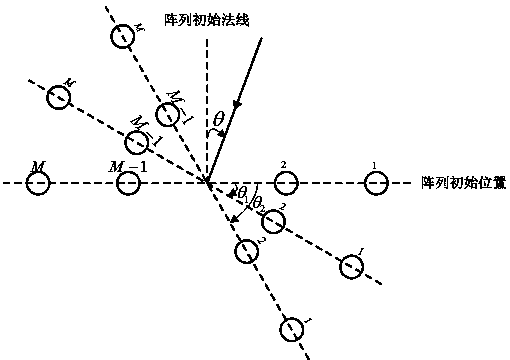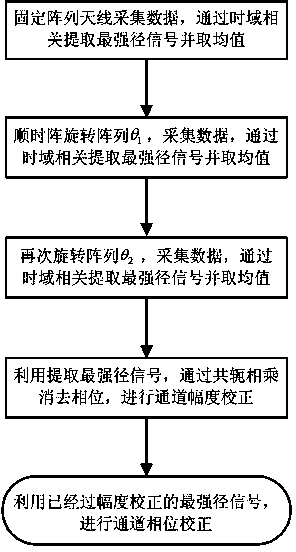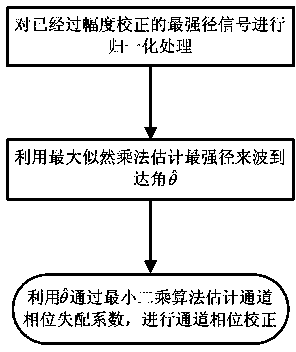Passive channel correction method and system of rotary array of outer transmitter-based radar
A technology for external radiation source radar and channel correction, which is applied in the field of passive channel correction of external radiation source radar rotating arrays, and can solve problems such as system errors, troublesome placement and maintenance of auxiliary signal sources, and complex near-field electromagnetic environment of array antennas.
- Summary
- Abstract
- Description
- Claims
- Application Information
AI Technical Summary
Problems solved by technology
Method used
Image
Examples
Embodiment Construction
[0064] The key of the present invention is that by rotating the array to receive multi-path echo signals, the problem of channel correction is transformed into the problem of parameter estimation, and thus a relatively accurate estimation of channel mismatch is obtained. Including rotating the array antenna twice or more, and separating the strongest path signal of each rotation through time-domain correlation calculation; using the strongest path signal to estimate the channel amplitude mismatch coefficient to achieve amplitude correction; The corrected strongest path signal and the angle information of the array rotation estimate the channel phase mismatch coefficient to realize phase correction.
[0065] The technical solutions of the present invention will be further specifically described below through embodiments and in conjunction with the accompanying drawings.
[0066] The embodiment establishes the signal model as follows:
[0067] China Mobile Multimedia Broadcasti...
PUM
 Login to View More
Login to View More Abstract
Description
Claims
Application Information
 Login to View More
Login to View More - R&D
- Intellectual Property
- Life Sciences
- Materials
- Tech Scout
- Unparalleled Data Quality
- Higher Quality Content
- 60% Fewer Hallucinations
Browse by: Latest US Patents, China's latest patents, Technical Efficacy Thesaurus, Application Domain, Technology Topic, Popular Technical Reports.
© 2025 PatSnap. All rights reserved.Legal|Privacy policy|Modern Slavery Act Transparency Statement|Sitemap|About US| Contact US: help@patsnap.com



